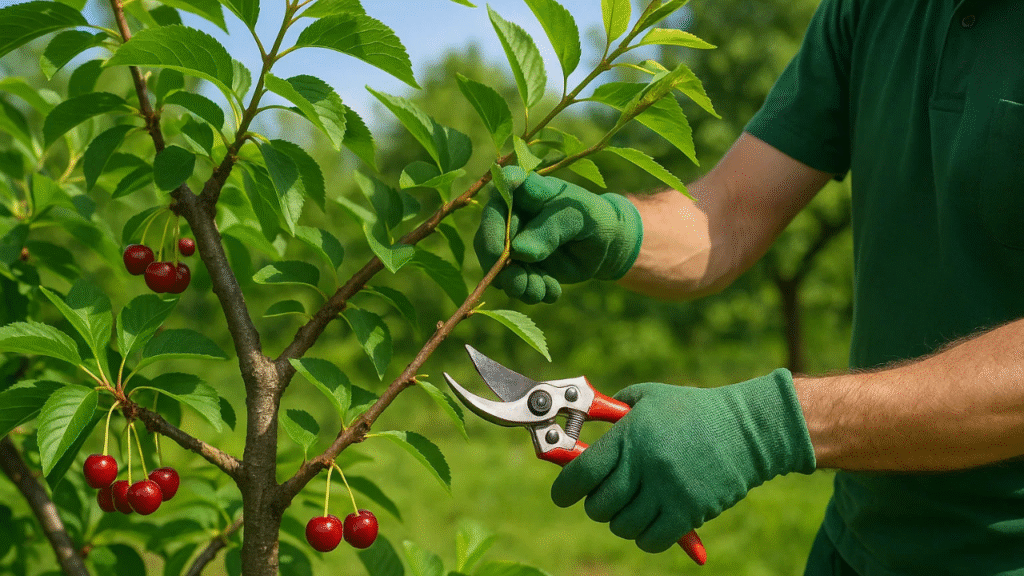
How to Minimize Cherry Tree Pruning Damage: Expert Tips for Healthy Growth
Pruning your cherry tree is a crucial part of its care routine, but did you know that improper pruning can actually cause more harm than good? 🌳✂️ While pruning is essential for healthy growth and better fruit production, it’s easy to make mistakes that lead to long-term damage. If you’re wondering how to minimize cherry tree pruning damage, you’re in the right place! This article will give you expert tips and practical advice to ensure your tree thrives year after year without suffering from pruning mistakes. Let’s dive into the best practices that keep your cherry tree strong, healthy, and beautiful!
Table of Contents
Toggle🌳 Understanding Cherry Tree Pruning 🌳
Pruning is more than just cutting branches—it’s a vital process that shapes your cherry tree and encourages healthy growth 🌱. By removing dead, damaged, or diseased branches, pruning helps the tree focus its energy on new growth and fruit production 🍒.

🌷 When to Prune 🌷
The best time to prune cherry trees is during late winter or early spring, just before the growing season starts 🌷. Pruning during this time minimizes stress and ensures the tree heals quickly. Avoid pruning in fall or summer, as it can leave the tree vulnerable to infections and pests 🦠.
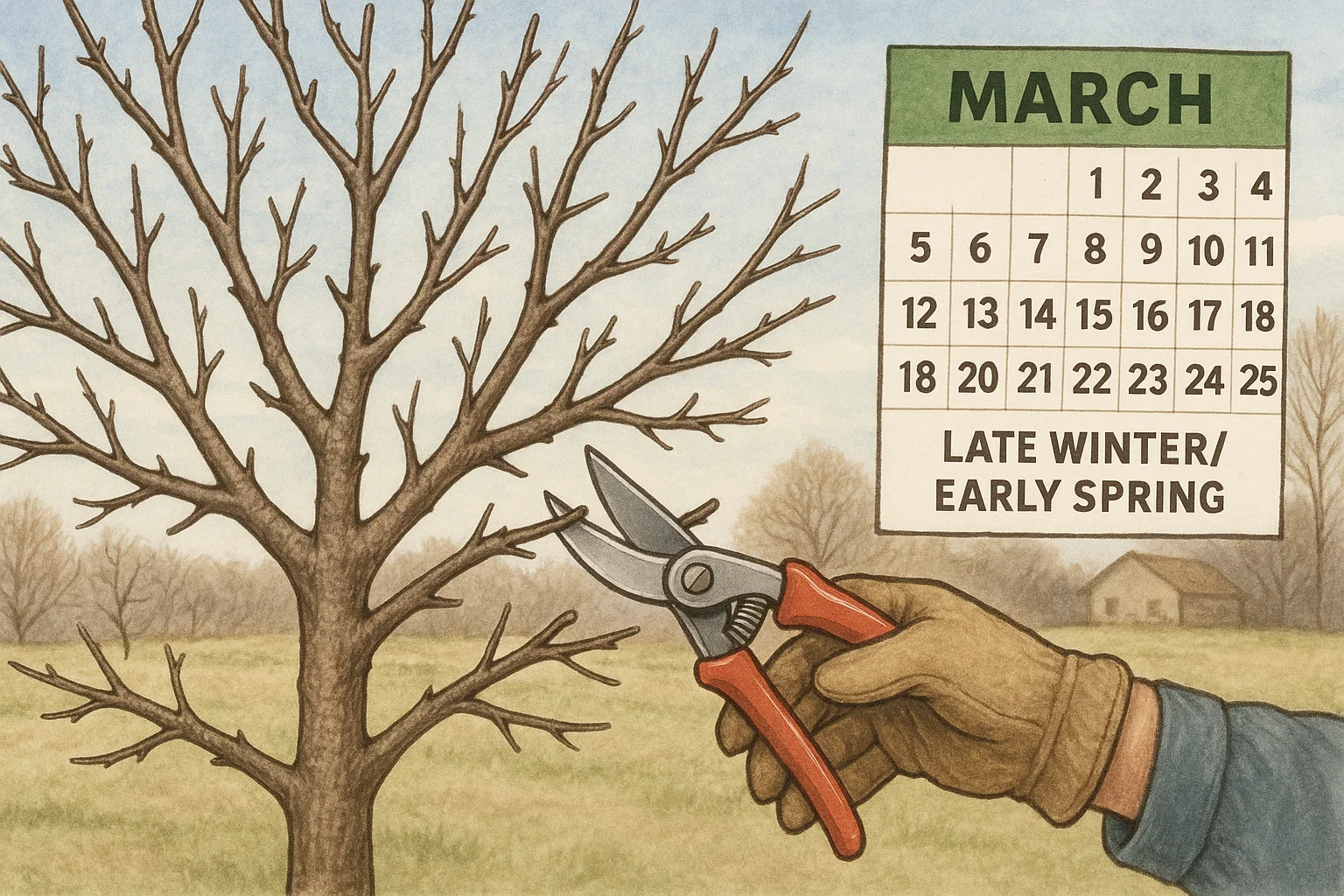
⚠️ Why Pruning Can Be Harmful ⚠️
If not done properly, pruning can damage the tree. Over-pruning or cutting at the wrong time can weaken the tree, making it more prone to diseases and poor fruiting. The goal is always to balance removing what’s unnecessary without harming the healthy parts of the tree 🌳.
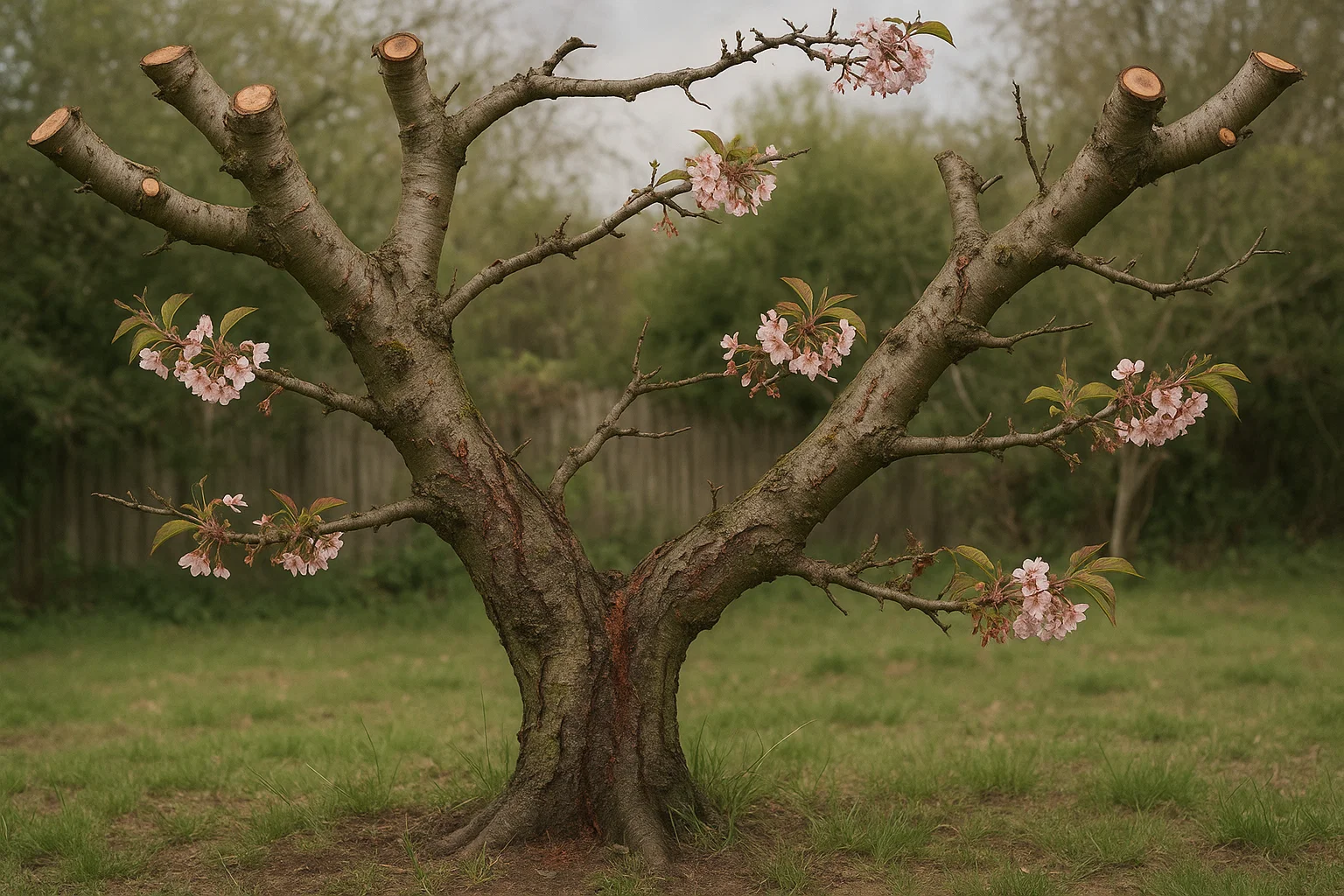
Understanding the importance of proper pruning will help you make better decisions for your tree’s health, ensuring it flourishes for years to come!
✂️ Common Pruning Mistakes and How to Avoid Them ✂️
Pruning can be tricky, and many gardeners unintentionally make mistakes that harm their cherry trees. Here are some common pruning errors to watch out for and how to avoid them:
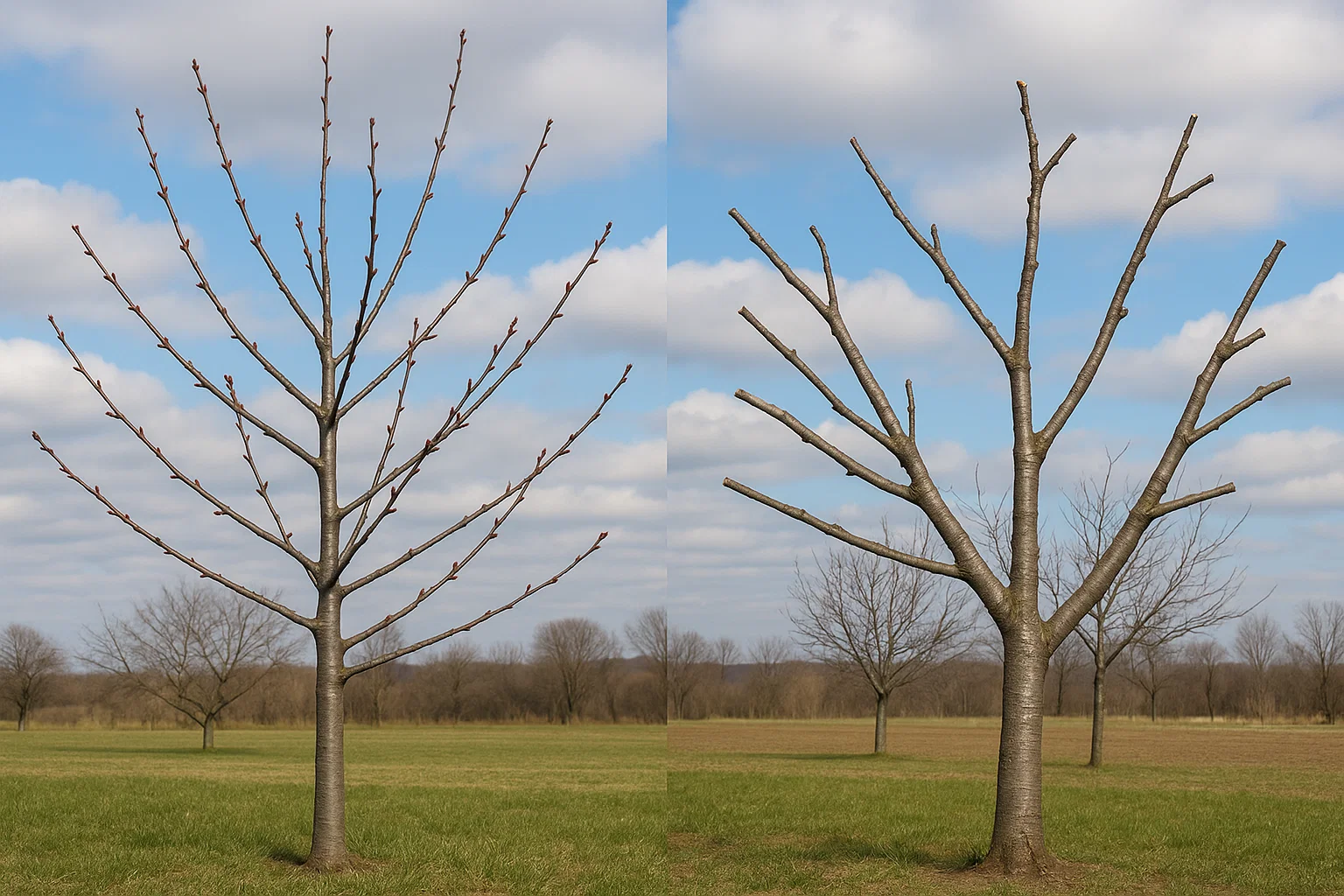
✂️ Over-Pruning ✂️
Removing too many branches at once can stress the tree and leave it vulnerable to disease and poor growth. Always focus on cutting only the necessary branches—dead, damaged, or diseased ones—without overdoing it. Less is often more!
🔪Using Dull or Incorrect Tools 🔪
Using blunt, rusty, or inappropriate tools can cause jagged cuts, leading to unnecessary wounds that take longer to heal. Always use sharp, clean pruning shears or saws to ensure smooth, healthy cuts. This minimizes the risk of infections and promotes better healing.
⏰ Pruning at the Wrong Time ⏰
Pruning during the wrong season, like late fall or during the growing season, can cause stress to your tree. The ideal time is late winter or early spring before new growth starts. This timing ensures the tree can heal quickly and enter the growing season with strength.
⚒️ Incorrect Cutting Techniques ⚒️
Making improper cuts—like cutting too close to the trunk or leaving stubs—can damage the tree and make it harder for it to heal. Always make cuts at an angle, about a quarter-inch above a bud or branch junction, to promote proper healing.
🎋 Topping the Tree 🎋
Topping, or cutting the top off a tree, is a big mistake! It disrupts the tree’s natural shape, weakens it, and encourages unhealthy regrowth. Instead, prune selectively to maintain the tree’s natural growth pattern.
Avoid these common mistakes, and your cherry tree will thank you with vibrant growth and a bountiful harvest! 🍒🌳 Knowing how to minimize cherry tree pruning damage can help you steer clear of errors that compromise its health and yield.
🌟 Expert Tips for Minimizing Pruning Damage 🌟
To ensure your cherry tree stays healthy and happy while minimizing pruning damage, follow these expert tips for the best results! 🌟
🔪 Use Sharp, Clean Tools 🔪
Always use sharp, high-quality pruning shears, saws, or loppers. Clean tools ensure smooth cuts that heal quickly, reducing the risk of infection. A quick wipe with rubbing alcohol between cuts helps prevent the spread of diseases.
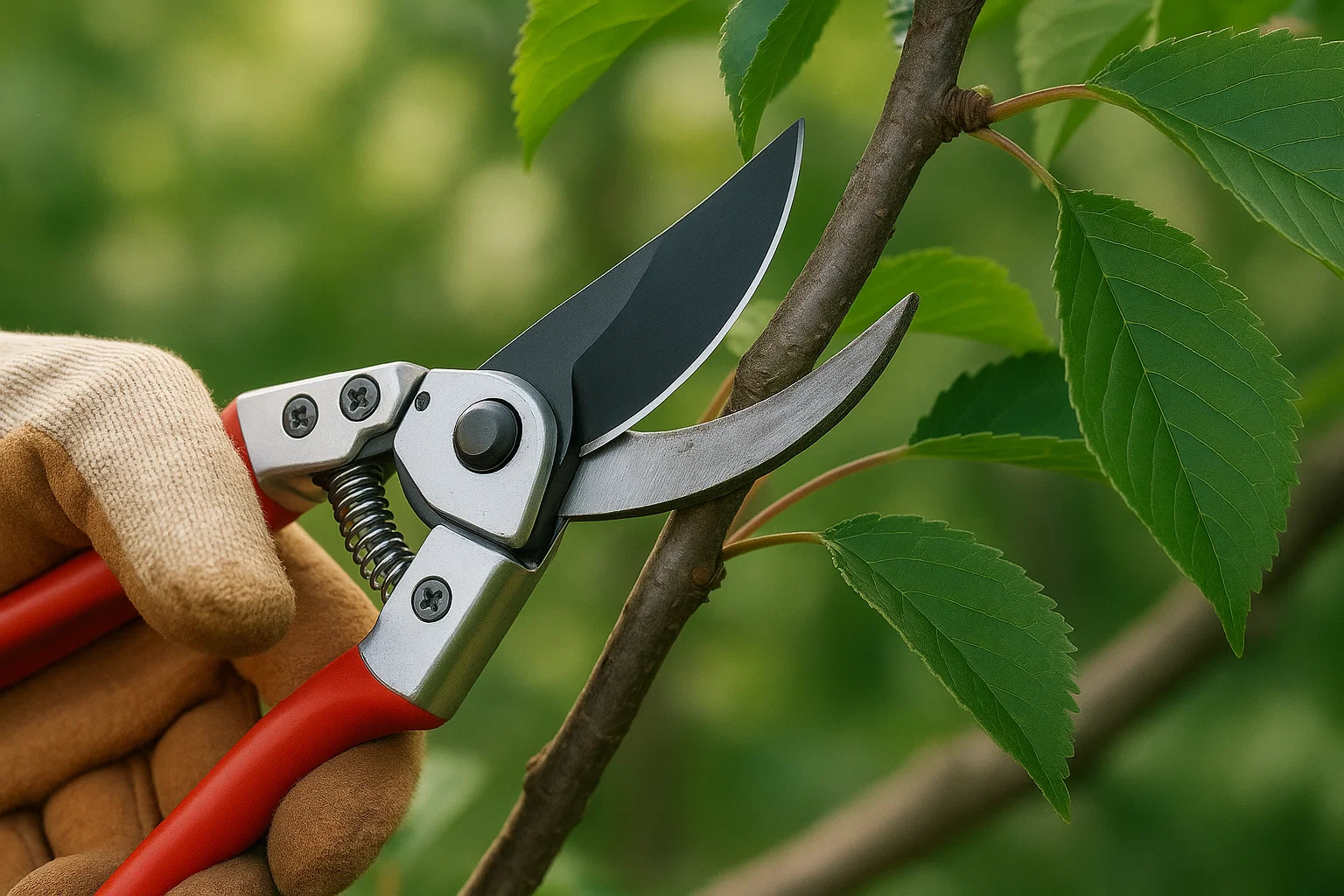
🎯 Prune with a Purpose 🎯
Pruning should be intentional—only remove branches that are dead, damaged, or diseased. Avoid cutting healthy, strong limbs unless absolutely necessary. Each cut should serve a specific purpose, like improving airflow or removing any obstacles to growth.
🌳 Follow the Tree’s Natural Shape 🌳
Rather than forcing a specific shape, prune to enhance the tree’s natural growth pattern. This promotes stronger, more balanced growth and reduces the risk of weakening the tree. Focus on cutting branches that crowd the center or grow at odd angles.
✂️ Make Clean, Proper Cuts ✂️
When making cuts, always do so at a slight angle, just above a bud or branch junction. This promotes faster healing and helps prevent water from collecting on the cut surface, which can encourage rot. Avoid leaving stubs—cut as close to the branch collar (the raised area where the branch meets the trunk) as possible.
🚫 Avoid Topping 🚫
Topping, or cutting off the top of your cherry tree, can lead to weak regrowth and increase the risk of disease. Instead, focus on thinning out crowded areas and removing any branches that hinder the tree’s growth and airflow.
By following these expert tips, you’ll minimize damage, encourage healthier growth, and ensure your cherry tree thrives year after year! Learning how to minimize cherry tree pruning damage is key to maintaining its long-term vitality and productivity.
🍒🌿
🌳 The Role of Proper Pruning in Long-Term Health 🌳
Pruning is more than just an aesthetic choice—it’s essential for the long-term health of your cherry tree. Proper pruning helps the tree thrive, ensuring it grows strong and produces bountiful fruit year after year 🍒. Here’s how:
🌬️ Improved Air Circulation 🌬️
Pruning opens up the tree’s canopy, allowing air to flow freely through the branches. This reduces humidity within the tree, preventing fungal diseases like powdery mildew and encouraging healthy growth.
🌞 Better Sunlight Penetration 🌞
By removing overcrowded or low branches, you allow sunlight to reach the inner and lower parts of the tree. This not only boosts photosynthesis but also helps your tree produce more fruit. The more light it gets, the healthier it becomes!
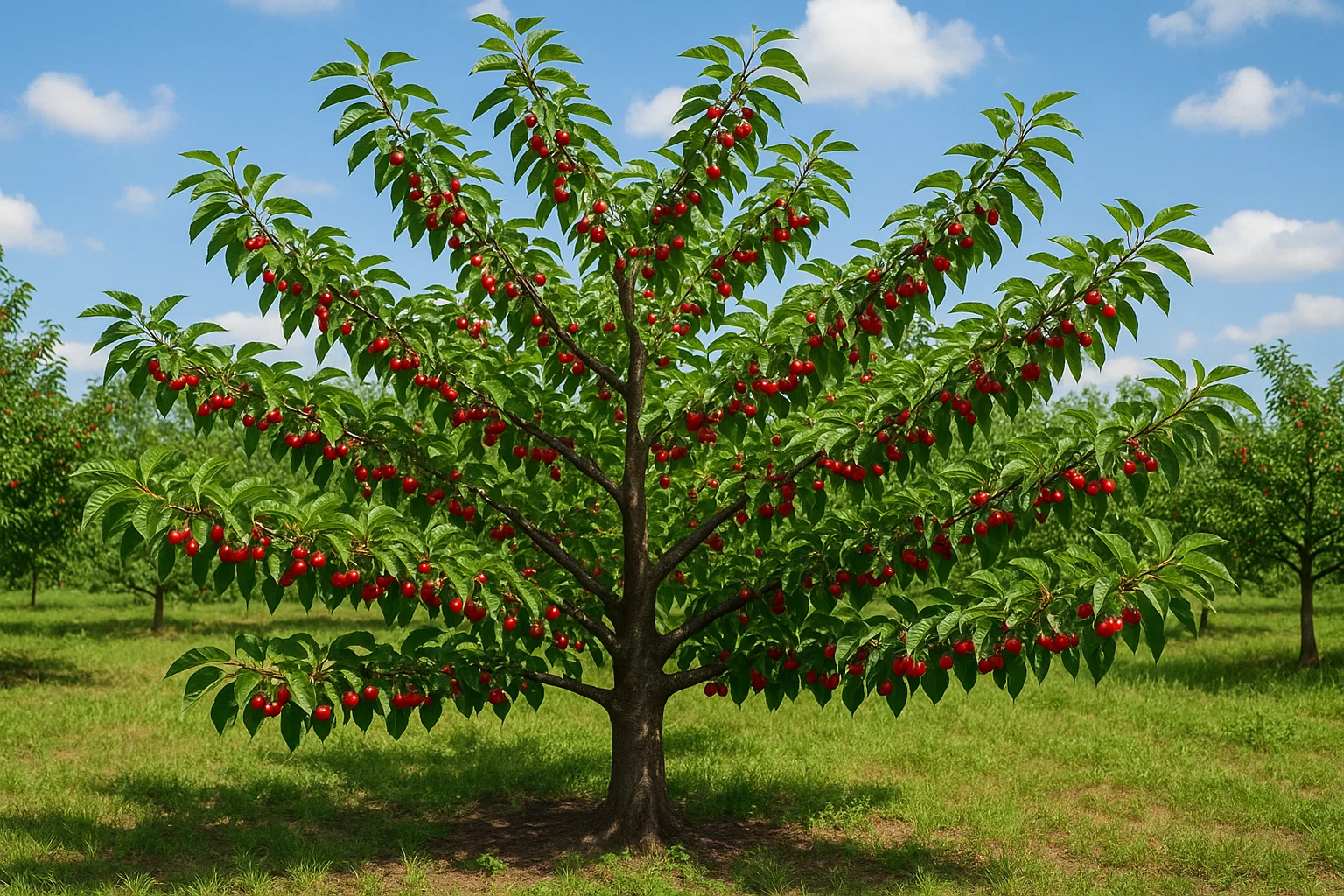
💪 Stronger, More Resilient Tree 💪
Regular pruning strengthens your cherry tree by removing weak or diseased branches. The tree can then redirect its energy into healthier, stronger growth, making it more resistant to pests, diseases, and environmental stress.
🍒 Encouraging Fruit Production 🍒
Pruning helps shape the tree in a way that encourages higher fruit yields. By removing old wood and focusing on the newer, more productive branches, you’re helping the tree focus its energy on producing delicious cherries!
In the long run, proper pruning helps your cherry tree live a long, productive life. It’s a crucial part of keeping your tree vibrant, resilient, and full of fruit! 🌳✨
🌳 When to Seek Professional Help 🌳
While pruning is an essential part of cherry tree care, there are times when it’s best to call in the experts. Here’s when you should consider seeking professional help for your tree:
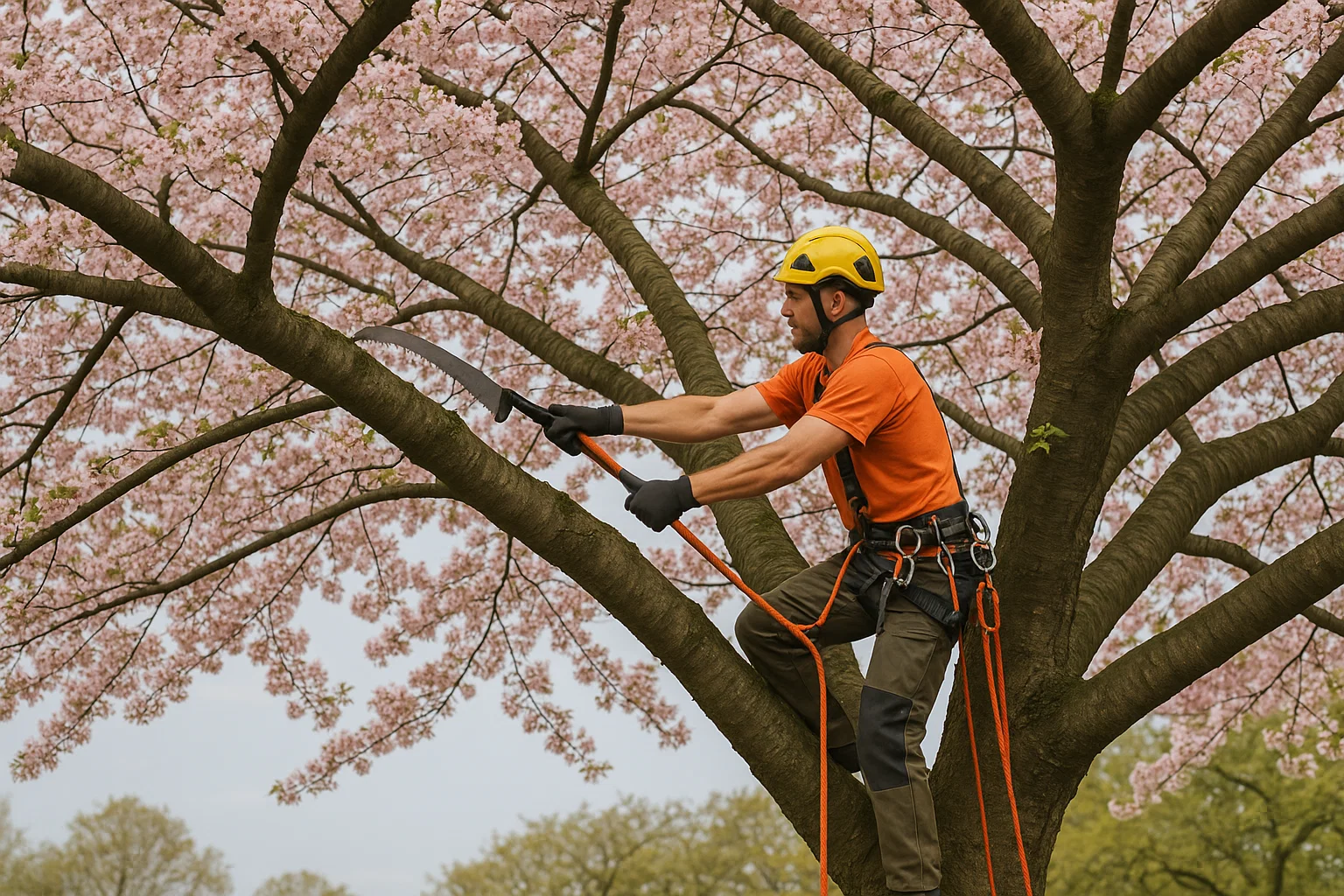
🌳 Complex or Large Trees 🌳
If your cherry tree is large, overgrown, or has complex structural issues, it might be challenging to prune safely on your own. Professionals have the skills and equipment to handle larger trees without causing damage or putting themselves at risk.
🦠 Severe Damage or Disease 🦠
If your tree has significant damage from storms, pests, or disease, a certified arborist can assess the situation and make the necessary cuts to save the tree. They can also recommend treatments for any infections or pests that may be affecting the health of your tree.
😬 Lack of Experience or Confidence 😬
If you’re unsure about the best way to prune or feel uncomfortable doing it yourself, it’s better to call an expert. They’ll ensure the job is done right, minimizing the risk of injury to the tree and maximizing its growth potential.
⚠️ Safety Concerns ⚠️
Pruning involves climbing ladders and working with sharp tools, which can be risky, especially when dealing with tall trees. Professionals are trained to safely handle these tasks, reducing the chances of accidents or injury.
🏡 Long-Term Tree Health Care 🏡
If you want to establish a long-term care plan for your cherry tree, an arborist can help you with regular maintenance pruning, pest management, and even soil health recommendations. They’re experts at keeping your tree strong and vibrant for years to come.
When in doubt, a professional can provide the expertise needed to ensure your tree stays healthy and safe. Don’t hesitate to get in touch with an arborist when you need help! 🌳🛠️
🌳 Final Thoughts 🌳
Pruning your cherry tree is an important part of its care, but doing it correctly is key to ensuring its health and long-term vitality. By understanding the best practices, avoiding common mistakes, and following expert tips, you can minimize pruning damage and help your tree thrive. 🌳✨
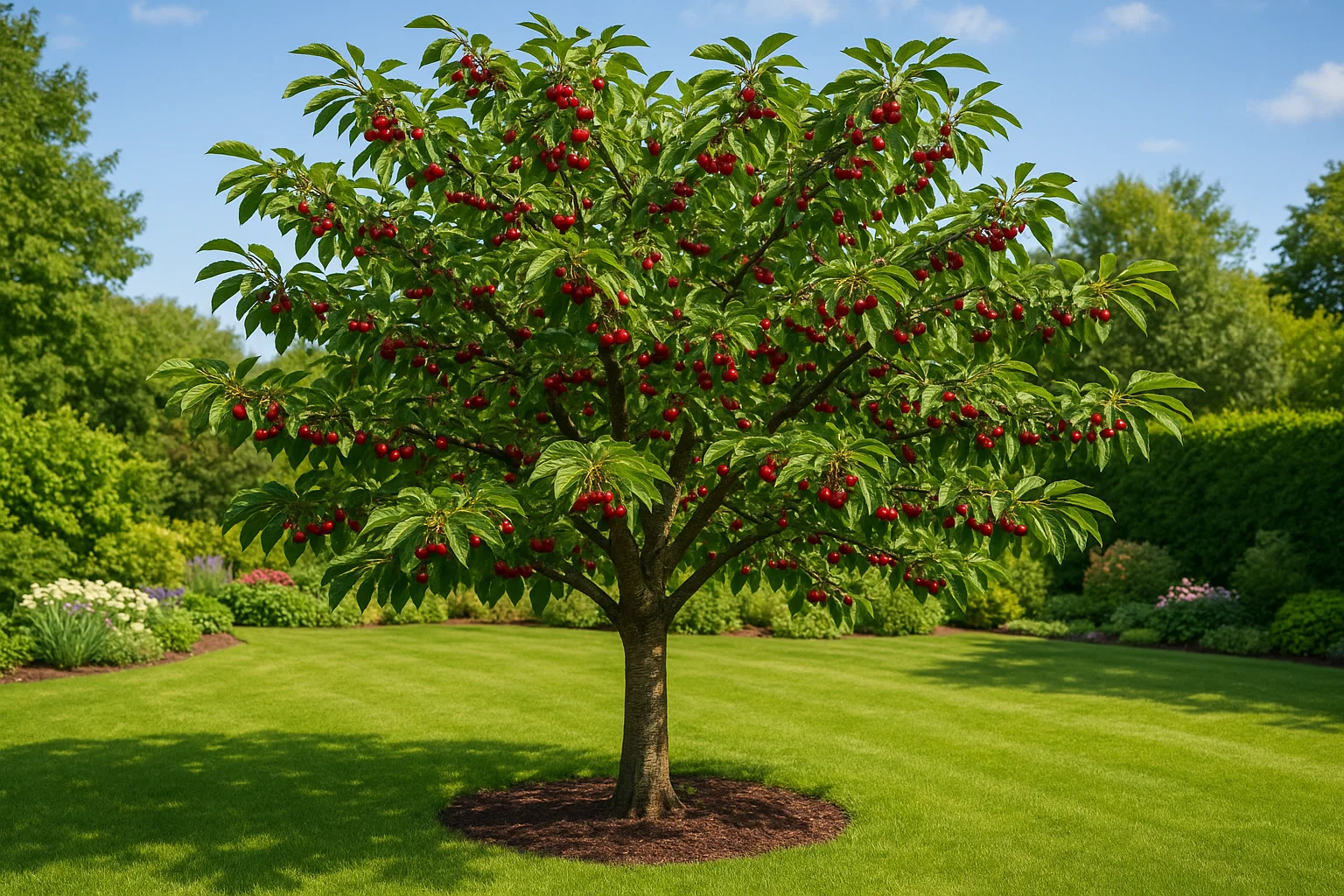
Remember, less is often more when it comes to pruning, and always prioritize the tree’s natural growth and structure. With the right approach, your cherry tree will reward you with abundant fruit and vibrant growth for years to come! Understanding how to minimize cherry tree pruning damage ensures your efforts support healthy development rather than hinder it. 🍒🌞
Whether you choose to prune yourself or consult a professional, take pride in the care you give to your tree. Your cherry tree’s health is worth the effort! 🌿💚
Frequently Asked Questions (FAQ)
When is the best time to prune a cherry tree?
The best time to prune a cherry tree is during late winter or early spring, before new growth begins. This reduces stress and helps the tree recover faster.
How do I avoid damaging the tree while pruning?
Use sharp, clean pruning tools to make clean cuts. Avoid removing more than 25% of the tree’s canopy at once and prune in stages if necessary.
Can pruning too much harm a cherry tree?
Yes, over-pruning can weaken the tree and make it more susceptible to diseases and pests. Always prune moderately to maintain healthy growth.
How can I minimize stress on my cherry tree while pruning?
Prune during the tree’s dormant period to minimize stress. Also, avoid pruning in extreme weather conditions and ensure cuts are clean and smooth to encourage faster healing.
Should I remove dead or diseased branches immediately?
Yes, removing dead or diseased branches right away helps prevent the spread of infection. Always disinfect your tools before and after pruning.
What are the signs that I’ve pruned my cherry tree incorrectly?
Signs of improper pruning include excessive dieback, browning leaves, or poor growth. If the tree’s health declines after pruning, it may need more attention.
How often should I prune my cherry tree?
Prune your cherry tree annually to remove dead or damaged branches, encourage healthy growth, and maintain its shape. Avoid heavy pruning every year.
Can pruning stimulate new growth on a cherry tree?
Yes, pruning can stimulate new growth by encouraging the tree to produce fresh shoots. Proper pruning helps shape the tree and promotes healthier fruiting.
